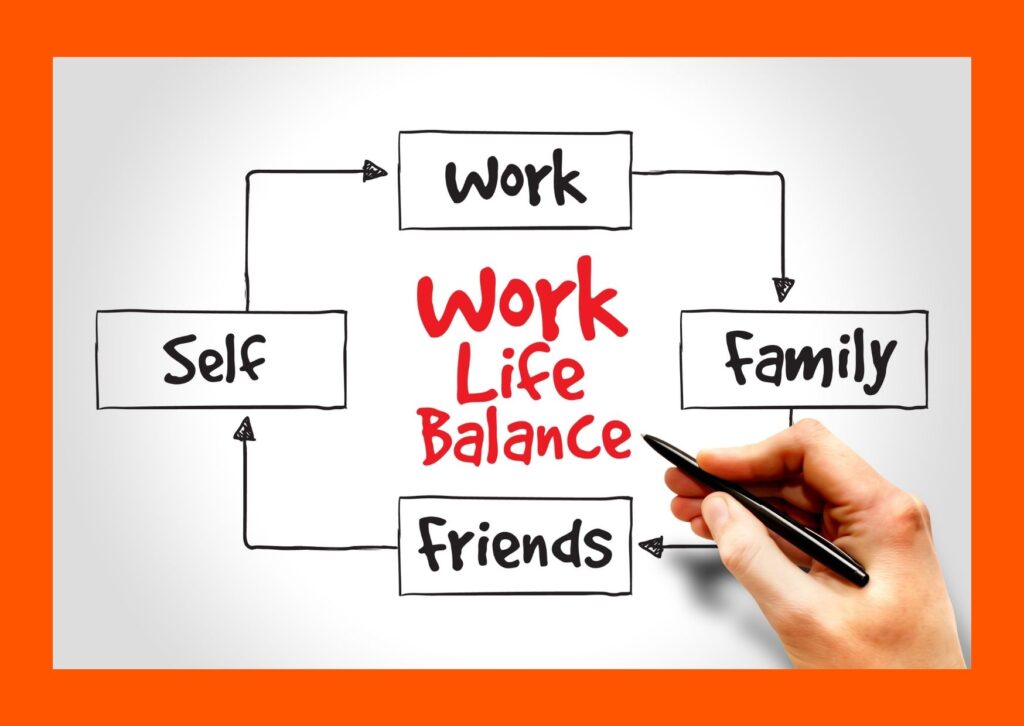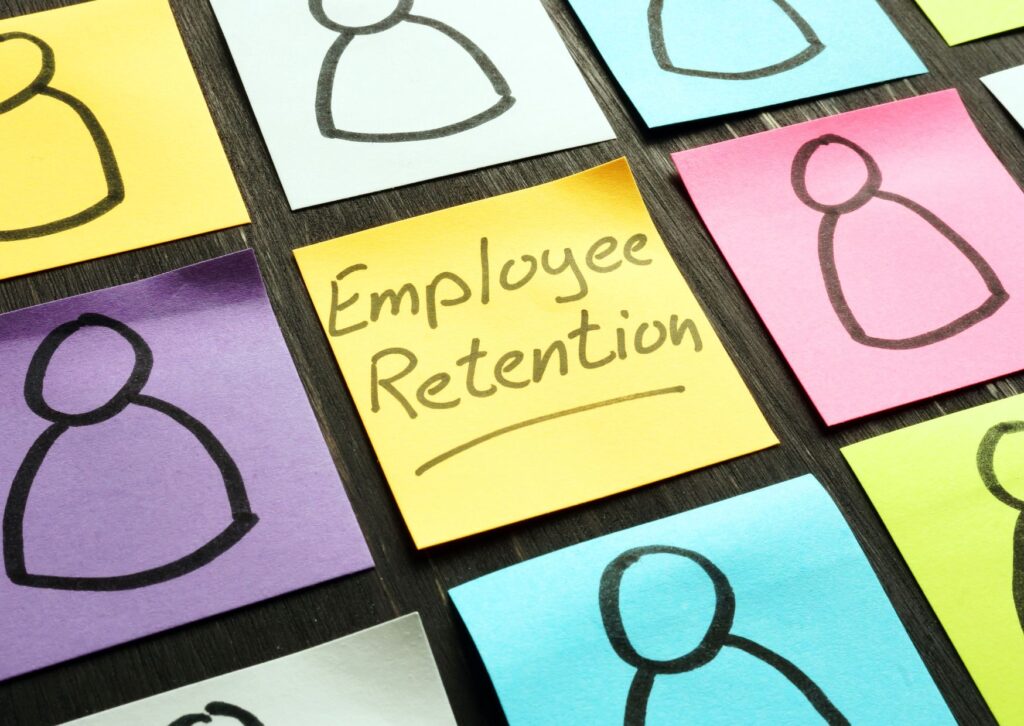15 Unique Ways to Boost Employee Satisfaction
A working environment where employee satisfaction is a priority is a bigger contributing factor to success than most companies realise.
In this blog, we’re going to delve into the world of employee satisfaction, exploring its importance, benefits, and how it influences employee retention rates.
We’ll also touch on the consequences of low employee satisfaction and discuss how to measure it effectively. And, of course, I’ll share 15 unique ideas to boost employee satisfaction in your organisation.
So, let’s get started on this journey to a happier, more productive workplace!
Contents
The Importance of Employee Satisfaction
The Benefits of Employee Satisfaction
15 Unique Ideas to Boost Employee Satisfaction
How does Employee Satisfaction Influence Employee Retention Rates?
What are the Consequences of Low Employee Satisfaction?
How to Measure Employee Satisfaction?

The Importance of Employee Satisfaction
Employee satisfaction is more than just a nice-to-have in today’s competitive business environment—it’s a vital ingredient for success.
But why is it so important?
Firstly, satisfied employees are more likely to be productive and efficient.
When employees are happy with their work environment, their roles, and their relationships with colleagues and managers, they’re more likely to put in their best effort.
This can lead to higher quality work and improved business outcomes.
Secondly, employee satisfaction plays a crucial role in employee retention.
People who are satisfied with their jobs are less likely to look for opportunities elsewhere.
This not only reduces the costs associated with high turnover but also helps maintain a stable, experienced workforce.
Lastly, employee satisfaction can significantly impact a company’s reputation.
Satisfied employees can become brand ambassadors, spreading positive word-of-mouth about the company.
This can help attract top talent and even win over customers.
In essence, employee satisfaction is a key driver of organisational success.
It’s not something that can be overlooked or pushed to the side.
It’s a critical aspect that needs to be nurtured and prioritised.

The Benefits of Employee Satisfaction
Now that we’ve established the importance of employee satisfaction, let’s delve into the benefits it brings to an organization.
Enhanced Productivity
Satisfied employees are motivated employees.
They’re more likely to be engaged with their work, leading to higher levels of productivity. It’s simple: when people enjoy what they do, they do it better!
Lower Turnover Rates
When employees are satisfied, they’re less likely to leave the organisation.
This leads to lower turnover rates, saving the company significant time and resources that would otherwise be spent on recruiting and training new staff.
Improved Company Culture
Employee satisfaction contributes to a positive company culture.
A workplace where employees are happy and feel valued is more likely to foster collaboration, creativity, and a sense of community.
Better Customer Service
Satisfied employees often translate into satisfied customers.
When employees are happy, they’re more likely to provide excellent customer service, which can boost customer loyalty and lead to repeat business.
Positive Brand Image
Employees are the face of a company.
When they’re satisfied, they can become powerful brand ambassadors, enhancing the company’s reputation and making it more attractive to potential employees and customers.
In short, investing in employee satisfaction can yield significant returns.
It’s not just about making employees happy—it’s about creating a thriving, successful organisation.
But how do we boost employee satisfaction?

15 Unique Ideas to Boost Employee Satisfaction
1. Initiate Health and Wellness Programs
Companies that prioritise their employees’ physical and mental wellbeing tend to see higher levels of satisfaction and productivity.
One way to support health and wellness is by offering on-site massages.
This not only provides a relaxing break for employees but also helps reduce stress and prevent work-related injuries.
It’s a small perk that can make a big difference in how employees feel about their workplace.
Another effective initiative is conducting employee wellbeing workshops.
These can cover a range of topics, from stress management and building confidence to creating life-changing habits and exercise.
The goal is to equip employees with the knowledge and tools they need to take care of their health, both in and out of the workplace.
Investing in health and wellness programs can help companies to boost employee satisfaction, reduce sick days, and create a more positive and productive work environment.
2. Implement Flexible Work Hours
Flexible work hours allow employees to adjust their work schedules to better fit their personal lives.
Whether it’s accommodating school drop-offs and pickups, personal appointments, or simply allowing employees to work when they feel most productive, flexible work hours can significantly improve work-life balance.
Moreover, this flexibility shows employees that the company values and trusts them, which can boost morale and job satisfaction.
It’s a win-win situation, employees get to work in a way that suits them best, and companies benefit from a happier, more engaged workforce.
3. Offer Remote Work Options
The ability to work from home or from a location other than the traditional office setting has become increasingly popular.
Offering remote work options can greatly enhance employee satisfaction, as it eliminates commute time, provides a more comfortable work environment, and allows for greater work-life balance.
Remote work also demonstrates trust in your employees, which can strengthen their loyalty to the company.
Plus, it can open up a wider talent pool, as geographical location becomes less of a barrier to employment.
However, it’s important to ensure that remote workers feel connected and engaged, so regular communication and virtual team-building activities are key.

4. Establish a Regular Feedback and Recognition System
Feedback and recognition play a vital role in employee satisfaction.
Regular, constructive feedback helps employees understand what they’re doing well and where they can improve.
It’s an opportunity for learning and growth, which can be highly motivating.
On the other hand, employee recognition for a job well done can significantly boost morale.
Whether it’s a simple “thank you” or a more formal recognition program, acknowledging employees’ hard work and achievements makes them feel valued and appreciated.
This can lead to increased job satisfaction and productivity.
Remember, feedback and recognition should be timely, specific, and genuine. It’s not just about pointing out the negatives—it’s about celebrating the positives too.
5. Develop Employee Skill-Building and Career Development Programs
Investing in your employees’ professional development can greatly enhance their job satisfaction.
This could involve providing training programs, sponsoring further education, or offering mentoring and coaching.
When employees see that the company is invested in their growth and career progression, they’re likely to feel more satisfied and committed to their work.
Plus, these programs can help employees acquire new skills and knowledge, which can benefit the company in the long run.
Remember, employee development is a two-way street—it requires commitment from both the employee and the employer.
By providing these opportunities, companies can foster a culture of learning and development, which can lead to higher employee satisfaction.

6. Provide Competitive Compensation and Benefits
While money isn’t everything, it certainly matters.
Offering competitive compensation and benefits is a fundamental way to boost employee satisfaction.
This not only includes a fair salary, but also other benefits such as health insurance, retirement plans, paid time off, and perhaps even unique perks like company retreats or gym memberships.
When employees feel they’re being fairly compensated for their work, they’re more likely to be satisfied and stay with the company.
It’s also a way to attract top talent in a competitive job market.
Remember, compensation should be regularly reviewed and adjusted to reflect market rates and individual performance.
7. Foster a Positive and Inclusive Work Environment
The work environment plays a significant role in employee satisfaction.
This includes both the physical environment (like a clean, comfortable office space) and the social environment (like a supportive, inclusive culture).
Fostering a positive work environment where everyone feels valued and included can boost morale and productivity.
This might involve promoting diversity, encouraging teamwork, or simply creating a pleasant, aesthetically pleasing workspace.
Remember, a positive work environment is one where everyone feels comfortable and able to do their best work.
It’s about more than just the physical space—it’s about the people, the culture, and the values.

8. Organise Regular Team-Building and Employee Engagement Activities
Team-building activities are a great way to boost employee satisfaction.
They can help employees get to know each other better, build trust, and improve communication and collaboration.
This can range from simple activities like team lunches or outings, to more structured team-building exercises or workshops.
Employee engagement activities, on the other hand, can help employees feel more connected to the company and its mission.
This could involve volunteering opportunities, company-wide meetings, or social events.
The goal is to create a sense of community and belonging, which can significantly enhance job satisfaction.
Remember, the most effective activities are those that align with your company culture and values. They should be inclusive, enjoyable, and meaningful.
9. Maintain Transparent and Open Communication
Transparent and open communication is key to employee satisfaction.
When employees feel informed about the company’s goals, strategies, and challenges, they’re more likely to feel valued and engaged.
This might involve regular company updates, open-door policies, or platforms for employees to share their ideas and feedback.
It’s also important to communicate clearly and promptly about any changes that may affect employees.
Remember, communication is a two-way street—it’s not just about providing information, but also listening to what employees have to say.
By fostering a culture of open communication, companies can build trust, improve problem-solving, and boost employee satisfaction.

10. Create Opportunities for Career Advancement
Career advancement opportunities can significantly boost employee satisfaction.
When employees see a clear path for growth and progression within the company, they’re more likely to feel motivated and committed to their work.
This could involve creating clear career paths, offering promotions from within, or providing leadership training for those interested in management roles.
It’s about helping employees grow and reach their full potential within the company.
Remember, career advancement isn’t just about moving up the ladder—it’s also about expanding skills and taking on new challenges.
By providing these opportunities, companies can retain top talent and foster a culture of ambition and achievement.
11. Promote Work-Life Balance Initiatives
Companies that promote work-life balance are likely to see higher levels of employee satisfaction.
This could involve offering flexible work hours, remote work options, or simply encouraging employees to take time off when needed.
It’s about respecting employees’ time and understanding that they have commitments and interests outside of work.
Remember, work-life balance isn’t just good for employees—it’s good for business too. Employees who have a good work-life balance are likely to be healthier, happier, and more productive.

12. Encourage Diversity and Inclusion in the Workplace
A diverse and inclusive workplace is a powerful driver of employee satisfaction.
When employees feel valued and respected for their unique perspectives and experiences, they’re more likely to feel satisfied and engaged with their work.
This could involve implementing diversity and inclusion training, creating diverse hiring practices, or establishing employee resource groups.
It’s about creating an environment where everyone feels welcome and able to contribute to their full potential.
Remember, diversity and inclusion are about more than just ticking boxes—it’s about fostering a culture of respect and appreciation for all employees.
This can lead to a more innovative, adaptable, and successful organisation.
13. Give Employees Autonomy and Decision-Making Power
Empowering employees with autonomy and decision-making power can significantly boost their job satisfaction.
When employees feel trusted and capable of making decisions, they’re more likely to feel engaged and committed to their work.
This could involve delegating tasks, encouraging initiative, or simply trusting employees to manage their own time and workload.
It’s about creating a culture of trust and respect, where employees feel empowered to take ownership of their work.
Remember, autonomy doesn’t mean leaving employees to fend for themselves—it’s about providing the right balance of freedom and support.
By giving employees autonomy, companies can foster a sense of responsibility and satisfaction.

14. Engage in Corporate Social Responsibility Initiatives
Corporate Social Responsibility (CSR) initiatives can have a positive impact on employee satisfaction.
When employees see that their company is committed to making a positive impact on society, it can increase their pride and satisfaction in their work.
This could involve environmental initiatives, community outreach programs, or charitable giving.
It’s about aligning the company’s values with actions that make a positive difference in the world.
Remember, CSR initiatives should be authentic and align with the company’s mission and values.
When done right, CSR can enhance the company’s reputation, attract top talent, and boost employee satisfaction.
15. Conduct Regular Employee Satisfaction Surveys
Last but not least, conducting regular employee satisfaction surveys is a key way to understand and improve employee satisfaction.
These surveys can provide valuable insights into what’s working well and where improvements can be made.
This could involve anonymous online surveys, one-on-one meetings, or suggestion boxes.
The goal is to gather honest feedback and use it to make informed decisions about workplace improvements.
Remember, it’s not enough to just collect feedback—you need to act on it.
By showing employees that their feedback is valued and acted upon, companies can boost trust, engagement, and satisfaction.

How does Employee Satisfaction Influence Employee Retention Rates?
Employee satisfaction and retention are closely linked.
Simply put, when employees are satisfied with their jobs, they’re more likely to stay with the company. But how exactly does this work?
Firstly, satisfied employees feel valued and appreciated.
They enjoy their work, feel connected to their colleagues, and believe in the company’s mission.
This positive work experience makes them less likely to seek opportunities elsewhere.
Secondly, satisfied employees are typically more engaged and productive.
They’re invested in their work and committed to the company’s success.
This sense of purpose and achievement can foster a strong sense of employee loyalty, further reducing the likelihood of turnover.
Lastly, companies that make employee satisfaction a priority often have strong employer brands.
They’re known as great places to work, which can make employees proud to be part of the company.
This positive reputation can enhance employees’ commitment to the company and their desire to stay long-term.
In essence, employee satisfaction is a key driver of employee retention.
By focusing on boosting satisfaction, companies can reduce turnover, save on recruitment costs, and maintain a stable, experienced workforce.

What are the Consequences of Low Employee Satisfaction?
Low employee satisfaction can have serious consequences for a company. Let’s explore some of the potential impacts:
High Turnover Rates
Dissatisfied employees are more likely to leave the company in search of better opportunities.
This can lead to high turnover rates, which can be costly in terms of recruitment, training, and lost productivity.
Lower Productivity
Employees who are unhappy at work are often less motivated and engaged, leading to lower productivity levels.
This can impact the quality of work and the overall performance of the company.
Negative Company Culture
Low employee satisfaction can lead to a negative company culture.
This can manifest in various ways, such as poor communication, lack of teamwork, or low morale, all of which can further decrease employee satisfaction and productivity.
Damage to Company Reputation
High employee turnover rates and a negative company culture can damage a company’s reputation.
This can make it harder to attract top talent and can even impact relationships with customers and clients.
Increased Absenteeism
Dissatisfied employees may be more likely to take sick days or be absent from work, which can disrupt workflow and productivity.
In short, low employee satisfaction can have a significant impact on a company’s success.
It’s crucial for companies to regularly assess employee satisfaction and take steps to improve it.

How to Measure Employee Satisfaction?
Measuring employee satisfaction is crucial for understanding your employees’ needs and improving their work experience.
Here are some effective ways to measure employee satisfaction:
Employee Satisfaction Surveys
These are one of the most common and effective methods.
Surveys can be anonymous and ask questions about various aspects of the job, such as work environment, management, compensation, work-life balance, and more.
The key is to act on the feedback received.
One-on-One Meetings
Regular meetings between employees and their managers can provide valuable insights into employee satisfaction.
These meetings offer a safe space for employees to share their thoughts and feelings about their work experience.
Employee Net Promoter Score (eNPS)
This is a simple metric that asks employees how likely they are to recommend the company as a place to work.
The responses can provide a quick snapshot of overall employee satisfaction.
Exit Interviews
When employees leave the company, exit interviews can provide valuable insights into their reasons for leaving and their overall satisfaction with their job.
Observation and Communication
Sometimes, simply observing employee behaviour and maintaining open communication can provide insights into employee satisfaction.
Changes in behaviour, productivity, or engagement can be indicators of changes in satisfaction.
Remember, measuring employee satisfaction is just the first step. The key is to use the insights gained to make meaningful changes that improve the employee experience and boost satisfaction.

Boosting employee satisfaction is not a one-time effort, but a continuous process that requires commitment and action from all levels of the organisation.
By understanding the importance of employee satisfaction and implementing the strategies we’ve discussed, companies can create a work environment where employees feel valued, engaged, and satisfied.
Remember, a satisfied employee is not just a happier individual, but also a more productive and loyal team member.
So, let’s put employee satisfaction at the forefront of our business strategies and create workplaces where everyone thrives.
Thank you for joining me on this journey, and here’s to a happier, more satisfied workforce!
Author
Tyler Lowe – Health & Wellbeing Speaker
BSc Sport & Exercise Rehabilitation


